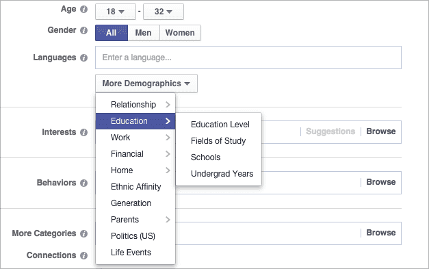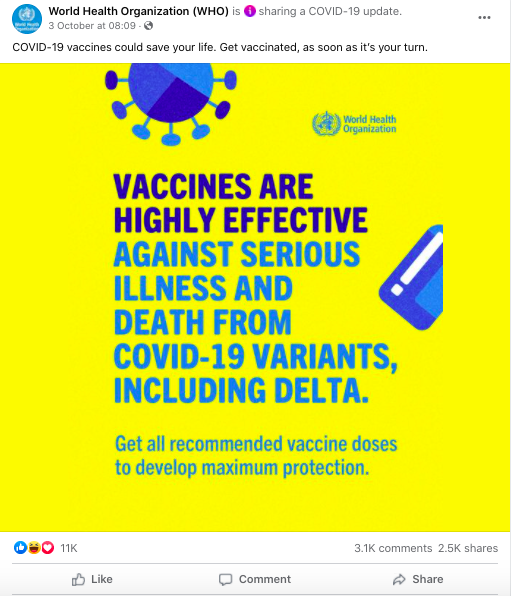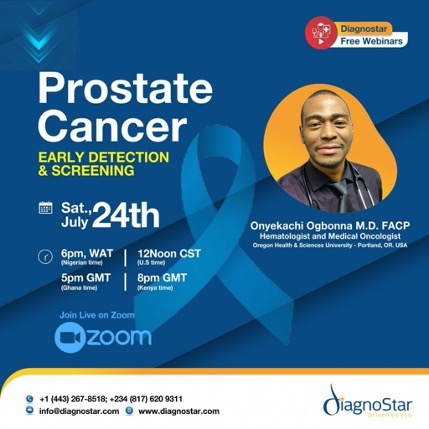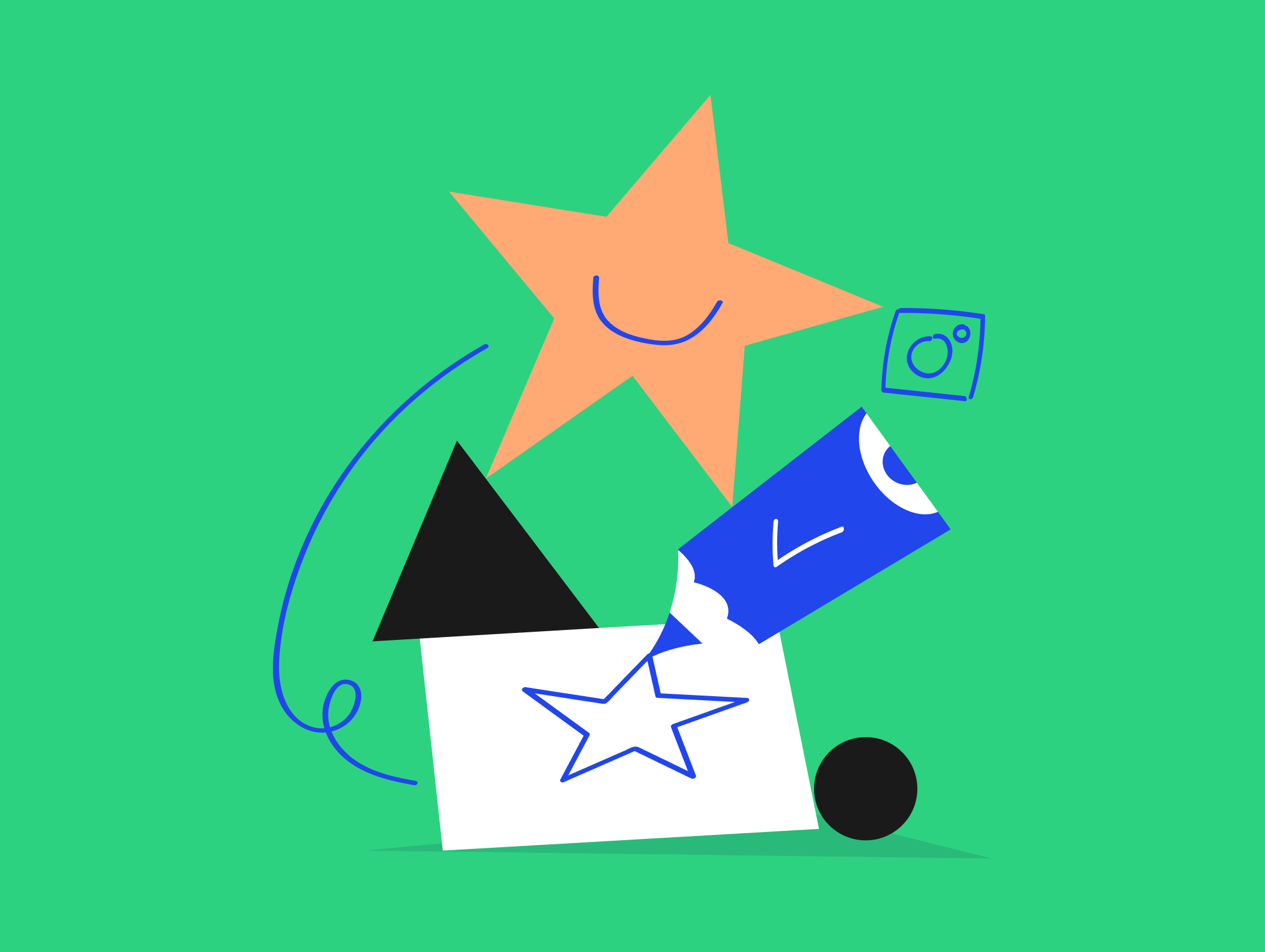Social media has become an essential tool for the healthcare industry. A report from Pew Research finds that approximately half of all U.S. citizens get their news from social media. As more people turn to online sources the importance of social media in healthcare can’t be overstated.
The COVID-19 pandemic brought about a seismic paradigm shift in the way people find and share important information. People have had distrust in traditional media outlets for a while now, a phenomenon explored in the 2021 Edelman Trust Barometer.
The study found that 59% of Americans said they agree with this statement: That “most news organizations are more concerned with supporting an ideology or political position than with informing the public.”
61% of Americans think that “The media is not doing well at being objective and non-partisan.”
And with the public’s lack of faith in the media growing, more people are turning to the internet for health advice.
Around one-third of people in the United States self-diagnose, using online information and the demand for health information on social media has never been higher. Just look at the CDC’s 4.3 million Twitter followers (as of October 2021).
These trends happening in tandem have put healthcare professionals in a precarious position. Social media holds the key to reaching millions of people with potentially life-saving information, but if used incorrectly can be an engine for spreading misinformation.
Using social media for health education is no cakewalk. Along with Health Insurance Portability and Accountability (HIPAA) compliance, which we’ll touch on later, healthcare providers, organizations, and brands alike have the unique responsibility of engaging with the public in an educative, timely, and tactful manner.
Today we’ll be going over the importance of using social media in healthcare and how you can utilize content marketing hacks to reach new audiences, start meaningful conversations, and achieve your #1 goal: helping as many people as you can.
The importance and benefits of using social media in healthcare:
Communicating during times of crisis
31.4% of Gen Z and Millennials went directly to social media as a source of news about the Coronavirus. Twitter in particular has become the main avenue for organizations to share breaking news during times of crisis.
A great example of social media spurring public discussion during a pandemic can be traced back to 2014 and the Ebola outbreak.
Between July 28th and September 19th of that year, 1,787,875 tweets were posted on the topic of the Ebola outbreak.
Several viral hashtags such as #EbolaWatch were trending on Twitter and as a result, people were made aware of the severity of the virus.
Fast forward to the present day and we can see the same trend emerging, though at a much larger scale.
Health organizations around have taken to social media to share important information during the COVID 19 pandemic.
One example would be UNICEF, a United Nations agency that provides humanitarian aid to children worldwide, using their Facebook banner space to portray a child wearing a protective mask.
Another example would be NSW using Twitter to update the public on rising COVID-19 cases and encouraging people to follow health regulations.
Aside from sharing COVID-19-related news, healthcare professionals can use social media to address other crises, such as the recent Salmonella outbreak.
The CDC took to Twitter in September to share important facts about the outbreak and how to detect symptoms of Salmonella.
Dispelling misinformation and quelling hysteria
It comes as no surprise that social media is a breeding ground for misinformation. The issue is so prevalent that even President Biden released a statement saying that “They’re killing people. The only pandemic we have is among the unvaccinated. And they’re killing people,…”.
With so much false information floating about, especially regarding COVID-19 vaccines, the public is becoming more open to the idea of the government stepping in to restrict misinformation online.
A Pew Research poll found that 48% of Americans are in support of the government censoring false data, a number up from 39% in 2018.
With widespread distrust among the public growing, healthcare professionals are taking to social media to bust myths and stamp out hysteria.
Austin Chiang, M.D., a gastroenterologist and director of the endoscopic bariatric program at Thomas Jefferson University Hospitals has become a viral sensation on social media. His TikTok videos, wherein he covers topics ranging from weight loss to color cancer screenings, regularly rack up hundreds of thousands of views.
The United Nations went on Twitter to spread awareness of the “infodemic” spurred on by COVID-19.
Due to the high demand for timely and trustworthy information about COVID-19, the WHO established the Information Network for Epidemics, a channel that directly combats misinformation.
Countries like Uganda witnessed mass-hysteria when the first cases of COVID hit the country. Some communities believed the virus was caused by evil spirits and even 5G mobile networks.
The Government of Uganda used channels like radio and social media to dispel rumors and share accurate facts.
The WHO also partnered with WhatsApp to launch dedicated messaging services in several languages to share critical information about COVID-19.
Building trust with the public
Overall, most American adults have positive overall perceptions of doctors and medical professionals. Even amid the pandemic and low public trust in key institutions, around 74% of U.S. adults believe that medical doctors have their patients’ best interests in mind.
It’s odd then that nearly 1 in 5 Americans haven’t seen a doctor in over five years. While the high cost of medical care in the U.S. is definitely an inciting factor, 26% percent of Americans still have a neutral or negative view of medical professionals.
So when a substantial percentage of the population won’t even go in for a simple check-up, it’s necessary for healthcare professionals to engage with citizens, especially during the current pandemic.
Social media can be a great avenue to build trust with the public and help patients feel more comfortable.
Here are a couple of tips for your social media strategy you can use to build trust with your audience on social media:
- Social listening. Social listening is the process of gathering data from social media to better understand who is talking about you and how they feel. Social listening allows you to measure unsolicited, honest feedback. Something as simple as spending time in the comments replying to questions or feedback can work wonders.
- Educate people with video content. Video is king on social media. The algorithm likes it and people like it. Video marketing increases brand awareness by 54% and generates better brand recall. Video is always a great way to showcase your personality, giving your organization a personality, which directly contributes to building trust.
Monitoring public discussions
The beauty of social media is that everyone has a voice. Just head to the comments section of any major health organization and chances are you’ll see hundreds if not thousands of people voicing their opinions.
If you’re looking to join in on the discussion or discover new topics that people might be interested in, social media can be exceptionally useful.
Browsing through hashtags like #flu or #covid19 can uncover how public sentiment on issues like vaccines can differ from what one would traditionally expect.
Head to Facebook and you can see just how rampant the discussions regarding COVID are. This post from the WHO got 2.5 thousand comments, many of which were people clashing with each other on the topic of vaccination.
Subjects like vaccines can be very sensitive, but as a healthcare professional, it’s important to use your knowledge to share the objective facts that can potentially save a life.
Raising awareness
Even though the COVID-19 pandemic is currently the most prevalent crisis, other important causes deserve to be brought to the public’s attention as well.
Social media is a key channel that health providers can use to provide trusted information regarding health concerns, both new and recurring.
With more and more people opting to get vaccinated against COVID-19, organizations are taking to social media to spread awareness about the importance of vaccines as a whole.
Back in 2018, Matt Damon and his foundation Water.org created a video that spotlighted the reactions of unsuspecting people in restaurants when they’re told water won’t be available for up to six hours.

The video was shared by Ellen Degeneres, racked up half a million views, and did the job of bringing people’s attention to the fact that women in the developing world have to wait up to six hours to collect water each day.
The WHO is using platforms like Facebook to combat socio economic and psychological issues like ageism, depression, and domestic violence.
Now that we know why using social media platforms for healthcare is important, let’s go over some actionable tips you can use in your content strategy to reach new people and engage with the community.
Social media and healthcare marketing: 3 best practices to reach new audiences
Share information from third-party sources
Not everyone has the resources to create the oodles of content needed to populate multiple social media accounts.
In addition, many medical professionals learn about new information and best practices through conferences and research papers, resources that the general public may not have ready access to.
This is where sharing third party information can come in handy; not only to stretch out your existing content but also to solidify yourself as an expert in your field.
When curating content as a healthcare professional, the number one concern should be the source.
We touched on misinformation and untrustworthiness earlier and how sharing information from trusted authorities can help curb those issues.
When looking for third-party content, be sure to double and triple check the source. Any new findings you link to should be from professional associations, medical journals, or government organizations.
RSS readers like Feedly can help you collect and categorize content from your go-to sources.
Websites like Medscape, an organization that provides educational findings for health professionals can give you fresh ideas whenever you hit a content dry spell.
You can use tools like Kontentino to organize all of that content in an intuitive calendar and even schedule posts for future publishing.
Host Q&A’s
Social media offers healthcare professionals new and unique ways of reaching the public and answering their burning questions. For example, the World Health Organization collaborated with Sprinklr to develop an AI-powered Facebook Messenger chatbot that offers instant and accurate information about COVID-19.
The WHO Health Alert service on WhatsApp has already reached over 12 million people, many of whom were in regions hardest hit by the coronavirus.
Health professionals can also use livestreams to better engage with their audience. Many practitioners are participating in live health webinars to help patients detect symptoms of health issues, discuss treatments and share standard emergency protocol.
Use ads to reach the right demographic
Some health issues impact certain demographics more than others. If you’re looking to spread awareness among a certain age group, gender or even income level, using targeted ads can be a great way to reach the people who matter.
Facebook is by far the most popular social media network for advertisers due to the platform’s enormous reach of 2.8 billion users and the ability for advertisers to use targeted ads to reach basically anyone.
Here are the main targeting options Facebook provides through it’s platform:
1. Age, location, and gender. These are the three most popular general targeting options that advertisers use to narrow down their audience.
2. Demographics targeting. This option lets you segment people based on education and financial status, jobs or careers, political views, ethnic affinity, generation and even life events.

3. Interest targeting. Interest targeting is incredibly useful for finding people who have expressed an interest in relevant Facebook pages or topics. Just make sure to combine different targeting options so that your audience isn’t too large.
Social media for healthcare helps people by providing important information
Social media has changed the healthcare landscape. With so many tools at your disposal, helping people through the power of information has never been easier. Whether you’re looking to stamp out misinformation, spread awareness of rising health issues, or provide aftercare support to patients, we hope this guide gives you what you need to get started.














